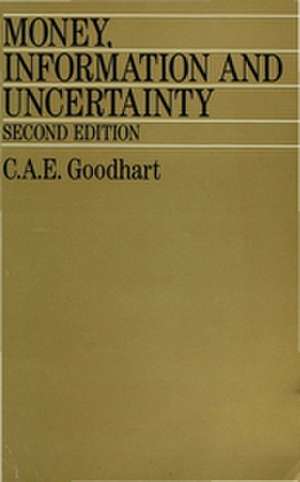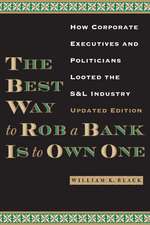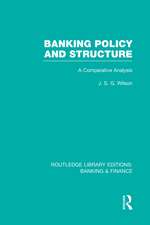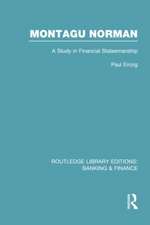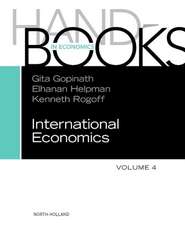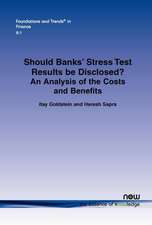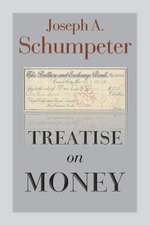Money, Information and Uncertainty
Autor C.A.E. Goodharten Limba Engleză Paperback – 19 mai 1989
Preț: 471.48 lei
Preț vechi: 533.13 lei
-12% Nou
Puncte Express: 707
Preț estimativ în valută:
90.23€ • 93.85$ • 74.49£
90.23€ • 93.85$ • 74.49£
Carte tipărită la comandă
Livrare economică 14-28 aprilie
Preluare comenzi: 021 569.72.76
Specificații
ISBN-13: 9780333474020
ISBN-10: 0333474023
Pagini: 512
Dimensiuni: 155 x 235 x 28 mm
Greutate: 0.71 kg
Ediția:Revizuită
Editura: Macmillan Education UK
Colecția Red Globe Press
Locul publicării:London, United Kingdom
ISBN-10: 0333474023
Pagini: 512
Dimensiuni: 155 x 235 x 28 mm
Greutate: 0.71 kg
Ediția:Revizuită
Editura: Macmillan Education UK
Colecția Red Globe Press
Locul publicării:London, United Kingdom
Cuprins
Preface
to
the
Second
Edition,
1989.-
Preface
to
the
First
Edition,
1975
.-
Acknowledgments.-
PART
1:
THE
NATURE
OF
MARKETS.-
Summary
Market
Structure
Determination
of
the
Size
of
the
Spread
Price
Adjustments
Market
Existence:
Success
or
Failure?
Money
and
Markets:
What
is
the
Best
Approach?.-
PART
2:
THE
ROLE
OF
MONEY
Summary
Certainty
and
Uncertainty
Money,
Information
and
Markets
What
Makes
Currency
Serve
as
Money?
Bank
Deposits,
Cheque
Payments
and
the
Definition
of
Money
Alternative
Currencies
.-
PART
3:
MICRO-ECONOMIC
FOUNDATIONS
OF
THE
DEMAND
FOR
MONEY
Summary
The
Transactions
Demand
for
Money
Asset
Price
Uncertainty
and
the
Speculative
Demand
for
Money
Buffer-stock
Models
of
Money
Holding.-
PART
4:
MACRO-ECONOMIC
ANALYSIS
OF
THE
DEMAND
FOR
MONEY
Summary
The
Transition
from
Micro
to
Macro-studies
of
the
Demand
for
Money
The
Progressive
Collapse
of
Stability
in
the
Demand-for-Money
Function.-
PART
5:
THE
PRINCIPLES
OF
INTERMEDIATION
Summary
The
Role
of
the
Intermediary
1
The
Role
of
the
Intermediary
2
Banks
and
OFIs:
Differences
and
Similarities.-
PART
6:
CONTROLLING
THE
SUPPLY
OF
MONEY:
A
PROBLEM
FOR
THE
AUTHORITIES?
Summary
Multiplier
Finance
and
Open-market
Operations
Competition
with
the
Private
Sector
Complications
and
Conclusions.-
PART
7:
CREDIT
RATIONING
Summary
Credit
Control
Disequilibrium
Rationing
Equilibrium
Rationing
PART
8:
WHY
DO
BANKS
NEED
A
CENTRAL
BANK?
Summary
The
Central
Bank
as
Organiser
of
the
'Club'
of
Commercial
Banks
Banks'
Twin
Functions
in
Providing
Both
Payments
and
Portfolio
Management
Services
Bank
Portfolios
and
Central
Bank
Support.-
PART
9:
FINANCIAL
REGULATION
Summary
The
General
Theoretical
Critique
of
Regulation
The
Economic
Argument
for
Regulation.-
PART
10:
THE
DETERMINATION
OF
INTEREST
RATES
Summary
Practical
Issues
Theory
The
Demand
for
Money
and
the
Demand
for
Credit
Appendix:
Monetary
Base
Control:
The
Examples
of
Switzerland,
and
of
the
USA
in
1979-82.-
PART
11:
THE
TERM
STRUCTURE
OF
INTEREST
RATES
Summary
The
Theory
of
the
Term
Structure
Empirical
Studies
of
the
Term
Structure
of
Interest
Rates
Rational
Expectations
and
the
Term
Structure
PART
12:
THE
TRANSMISSION
MECHANISM
OF
MONETARY
POLICY
Summary
The
Keynesian
(IS/LM)
Framework
The
Monetarist
Counter-offensive
Buffer-stock
Money
Wealth
Effects.-
PART
13:
THE
EFFECTS
OF
NOMINAL
MONETARY
CHANGES
ON
OUTPUT,
EMPLOYMENT
AND
INFLATION
Summary
Uncertainty,
Unemployment
and
Price
Expectations
Rational
Expectations
and
Policy
Impotence
Appendix:
UK
Indexed
Gilts:
A
Case
Study
of
Financial
Indexation.-
PART
14:
MONETARY
POLICY
1:
THE
USE
OF
POLICY
INSTRUMENTS
IN
AN
UNCERTAIN
WORLD
Summary
Objectives
and
Instruments
Policy
Under
Uncertainty
1:
Random
Disturbances
Policy
Under
Uncertainty
2:
When
the
Structure
of
the
System
is
Not
Known.-
PART
15:
MONETARY
POLICY
2:
RULES
VERSUS
DISCRETION
Summary
The
Historical
Record,
1973-9
Rules
versus
Discretion
The
Historical
Record,
1979-87
Whither
Now?.-
PART
16:
THE
REGIONAL
ADJUSTMENT
PROCESS
Summary
Financing
Current
Account
Imbalances:
The
Capital
Account
Adjustment
to
a
Current
Account
Imbalance
Appendix:
A
Framework
for
the
Analysis
of
Inter-regional
Adjustment
.-
PART
17:
INTERNATIONAL
MONETARY
RELATIONS
1:
EXCHANGE
RATE
REGIMES
Summary
Optimal
Currency
Areas
Monetary
Relationships
Between
Currency
Areas.-
PART
18:
INTERNATIONAL
MONETARY
RELATIONS
2:
THE
TURBULENT
FLOAT
Summary
The
Experience
of
Floating
Exchange
Rates
Since
1973
Why
Were
Flexible
Rates
so
Unstable?
Attempts
to
Establish
a
More
Stable
Regime
Bibliography.-
Index.
